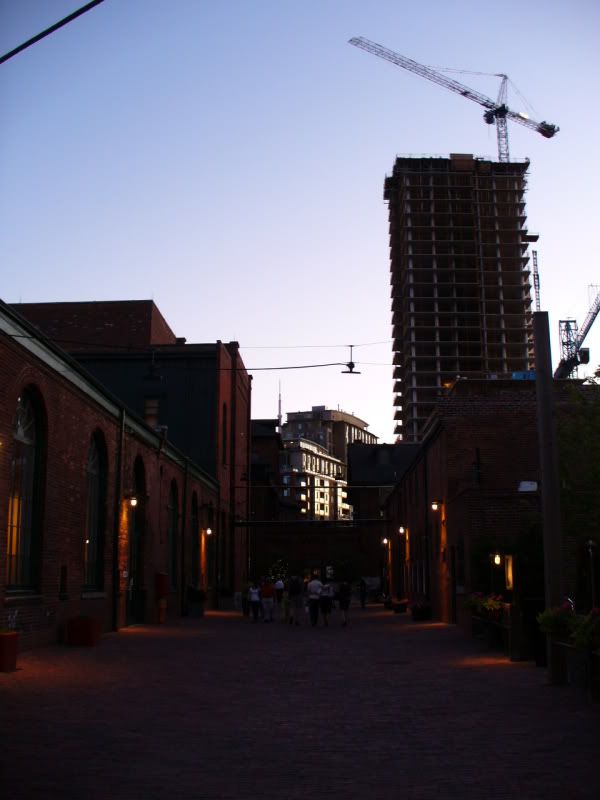Good point CDL. Before the Grand Trunk (whose main terminus was Bonaventure Station, south of present day CP Windsor Station), the port was the main transportation hub, so it made sense that the 1750s-1850s Vieux-Montreal is where it is. The newer parts of Downtown had less constricted streets for trade, which was particuarly important when automobiles entered the mainstream after 1910.
Also, as the city expanded, the main east west streets were no longer Notre-Dame and St. James, they became Dorchester, Ste-Catherine, Sherbrooke.
The Ville-Marie is the coolest highway I've now driven on.
Anyway, back to the Pure/Clear Spirit topic, I thought of this as I walked the extremely busy Vieux-Montreal district yesterday. There is little to distract one from feeling like he or she is in an ancient commerical and trade centre, even though few buildings date from the New France period.
The intrusions like the Banque Nationale building on Place d'Armes don't feel as bad as the Distillery District, even the BN building is shorter than what is planned or U/C. Now, I'd like someone to say 40 floor modernist towers should be allowed in Vieux-Montreal, because it a district that's something that Montreal, in general, is not.
We have Historic Conservation Districts through out the old City of Toronto for a reason. Not that one or a collection of buildings are significant, but as a whole, the neighbourhood or district is worth preserving, even if some newer, ugly buildings are thrown in, so you can control against unsympathetic development.



